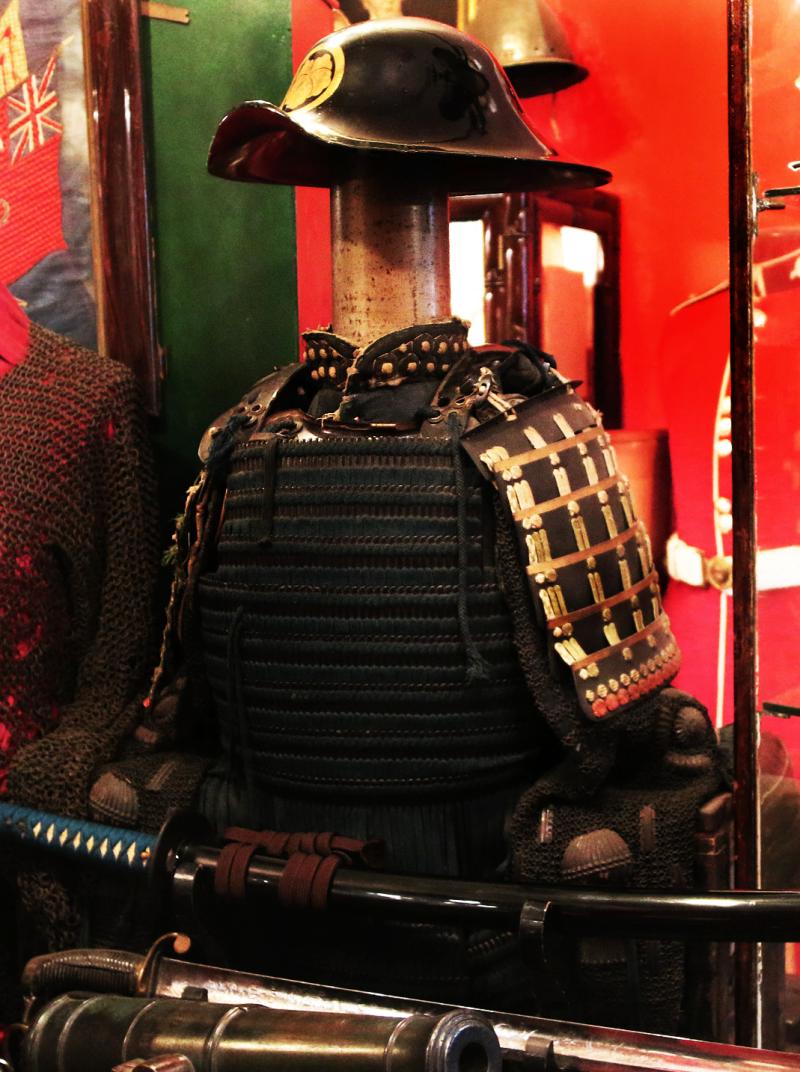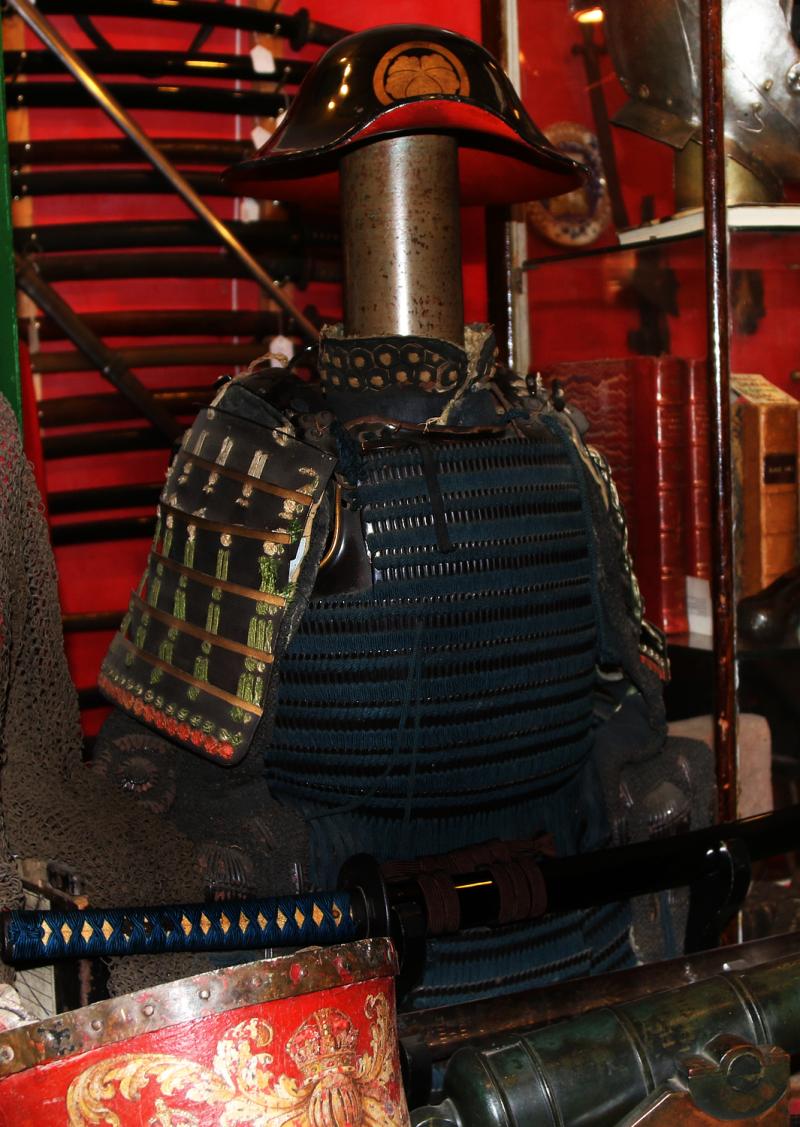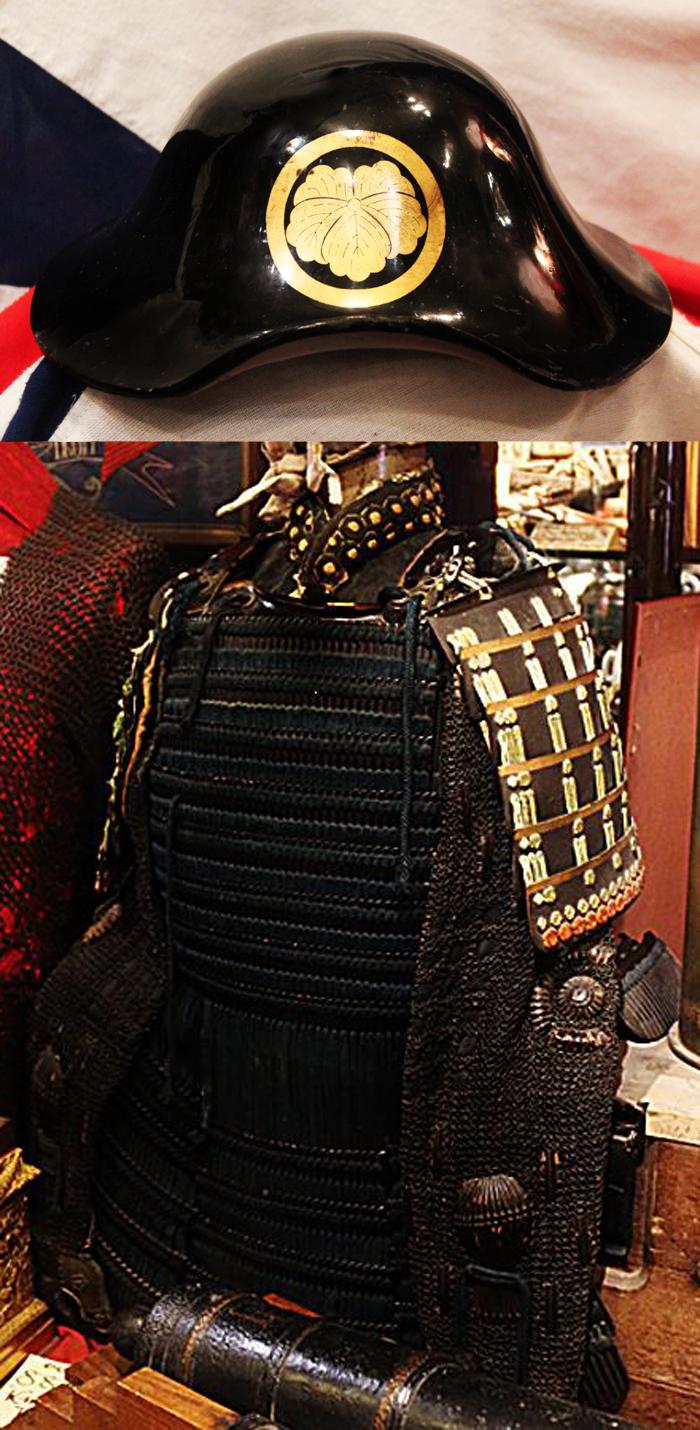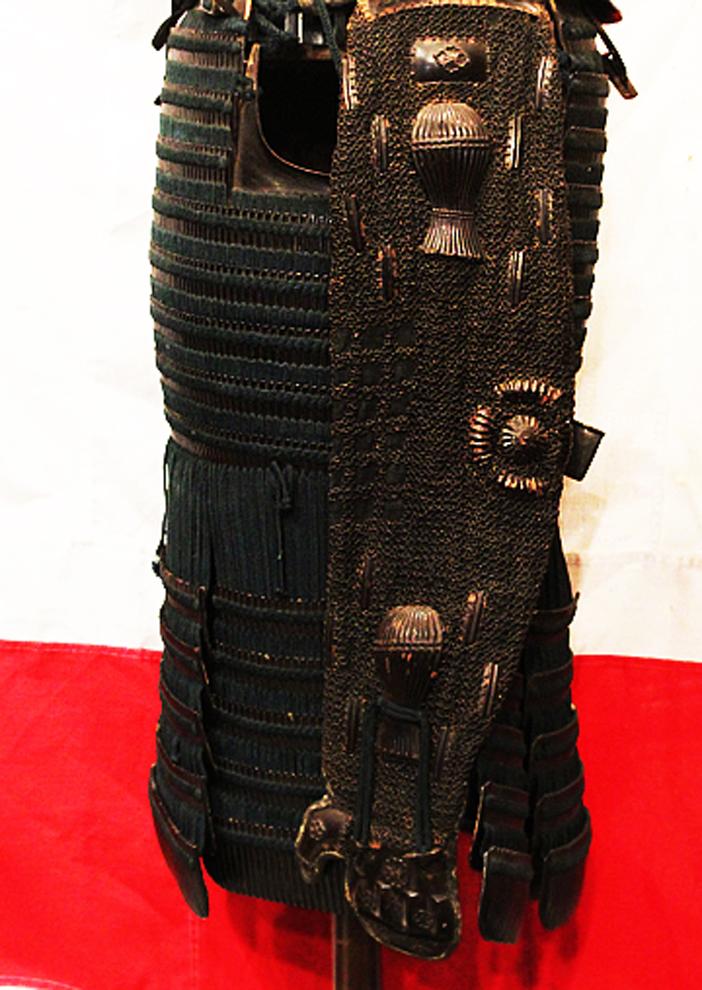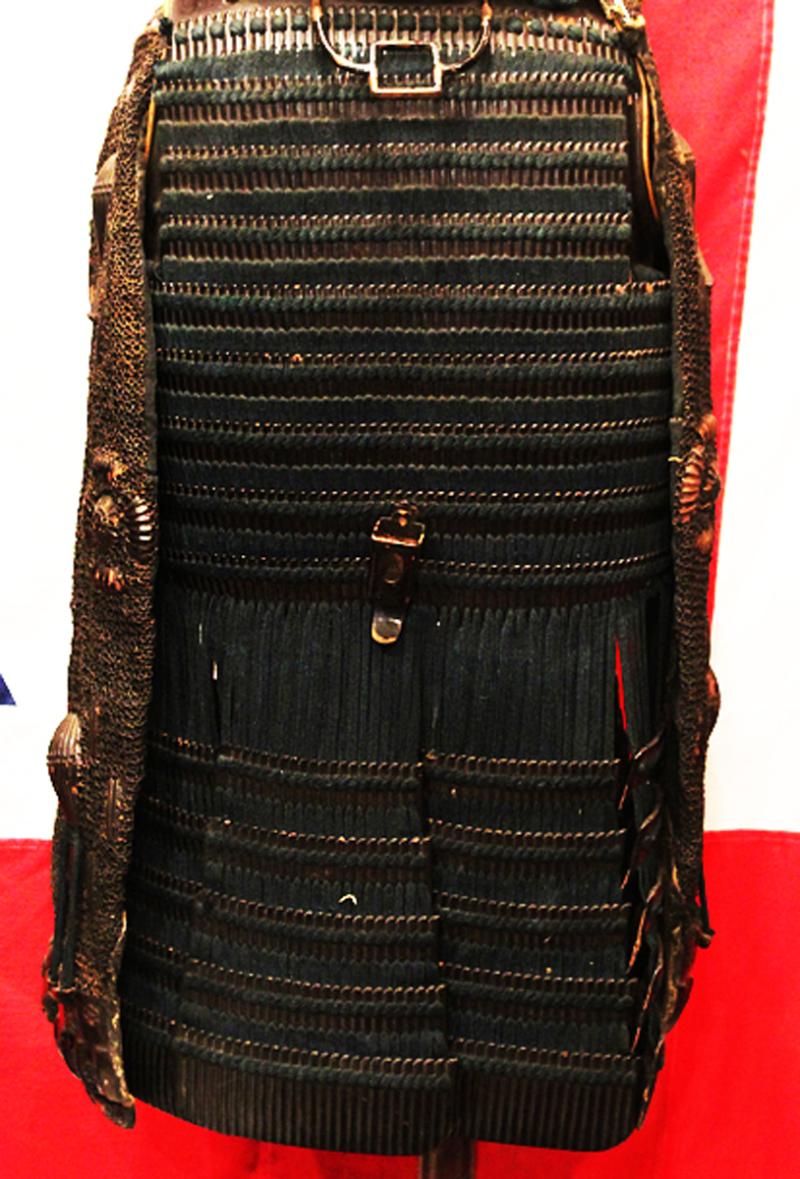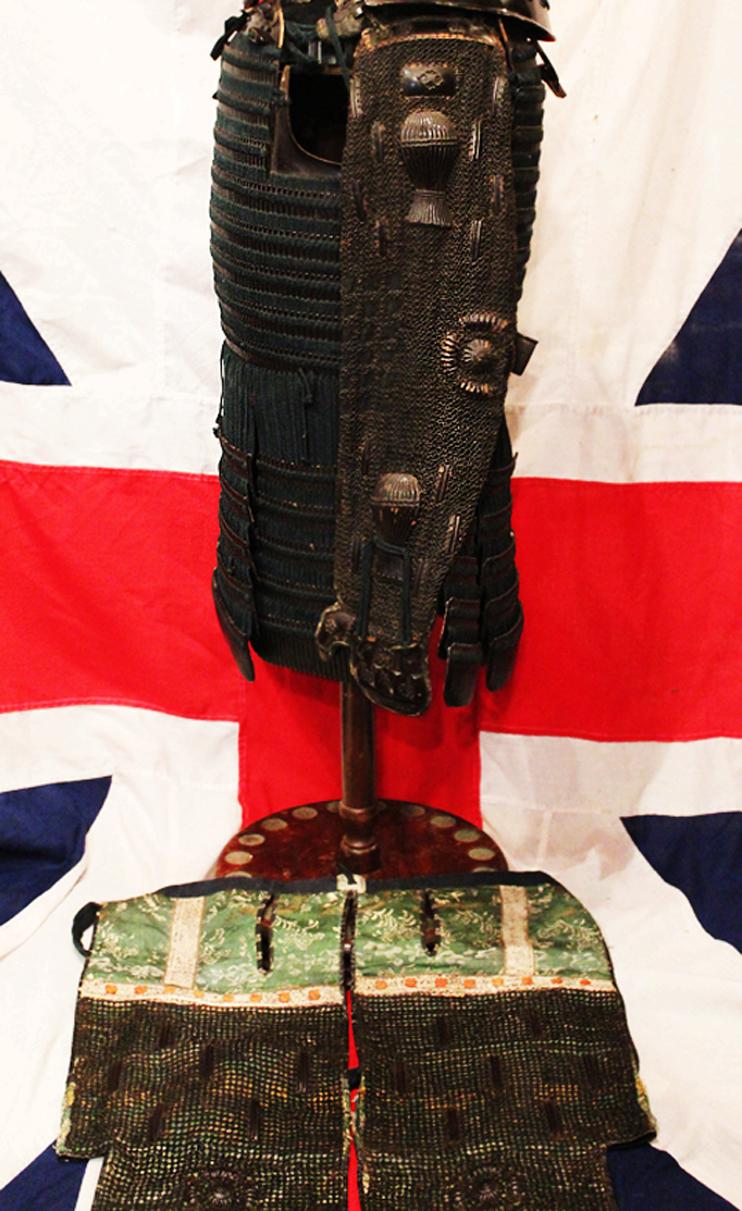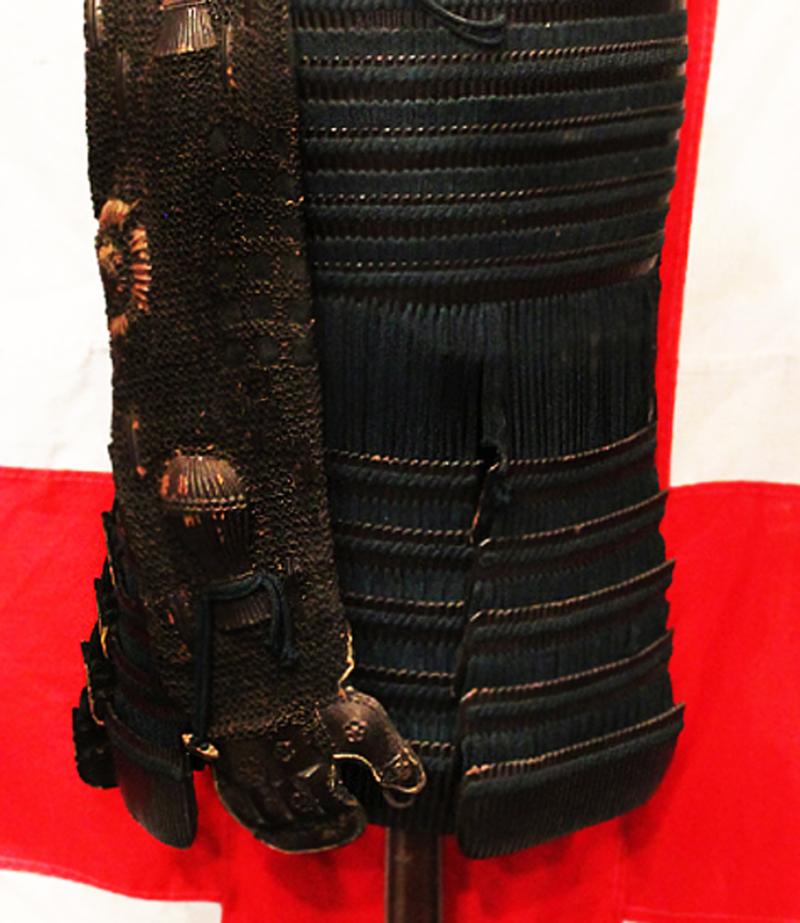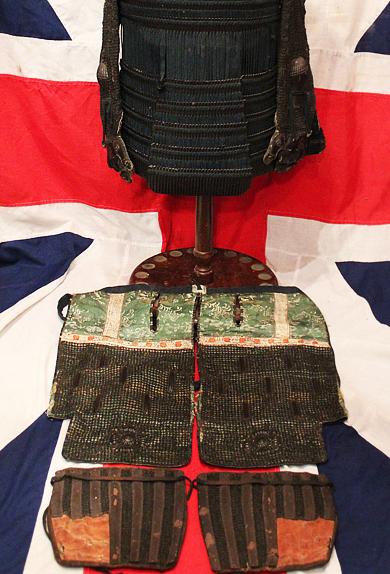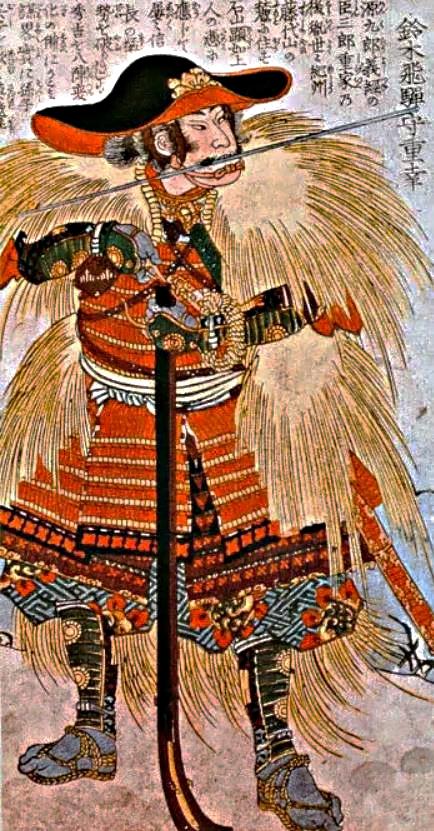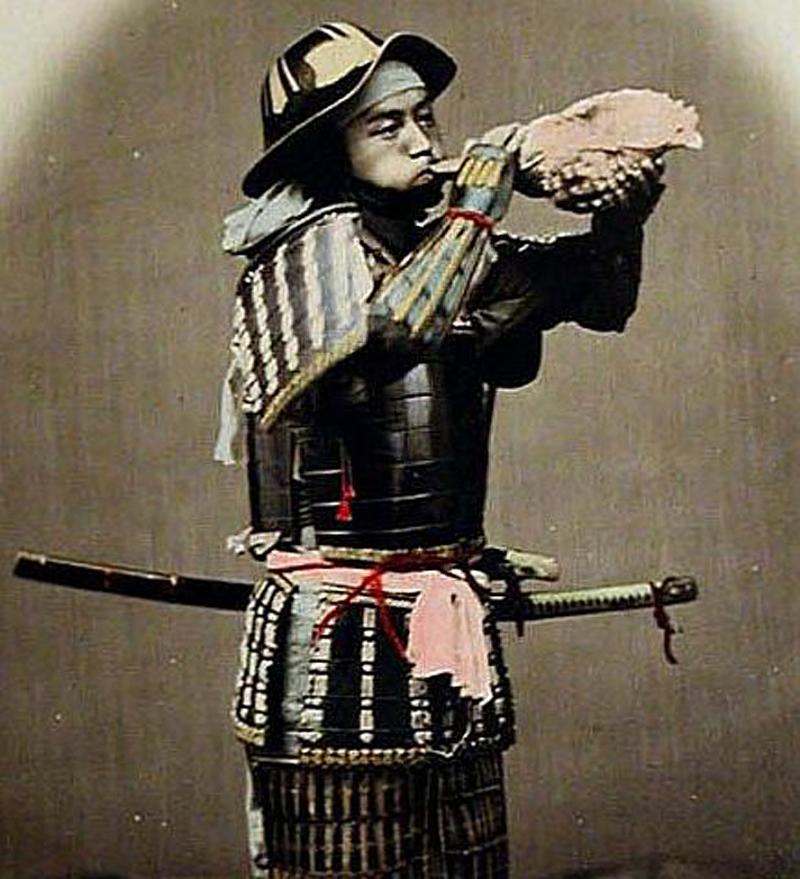Suit Of Original Edo Period Samurai Horserider Armour, With a Bajojingasa 馬上陣笠 Kabuto, A Samurai Horse Rider Battle Helmet. With Gold Maruni Tsuta Kamon. The Maruni Tsuta (丸に蔦) Kamon, Meaning "Japanese Ivy in a Ring". Matsunaga Family Crest in Kakuda
In our opinion there is no greater aesthetically attractive suit of antique original armour to compare to the Japanese samurai armour. One can see them displayed in some of the finest locations of interior decor in the world today.
For example, in the Hollywood movies such as the James Bond films many of the main protagonists in those films decorated their lush and extravagant billionaire properties with samurai armours. They can be so dramatic and beautiful and even the simplest example can look spectacular in any correct location with good lighting.
Original early Edo period.
Chain mail over silk Kote arm armour with plate Tekko hand armour. Fully laced and plate Sode shoulder armour Fully laced four panels of Haidate waist armour Fully laced Kasazuri thigh Armour, with Suneate. This armour is absolutely beautiful.
Japanese armour is thought to have evolved from the armour used in ancient China and Korea. Cuirasses and helmets were manufactured in Japan as early as the 4th century.Tanko, worn by foot soldiers and keiko, worn by horsemen were both pre-samurai types of early Japanese cuirass constructed from iron plates connected together by leather thongs.
Black urushi lacquer bajojingasa horseriders helmet 馬上陣笠 with superb mon, red lacquer interior with pad and cords but the cords outer silk has separated. With five leaf ivy in a ring mon of the Matsunaga clan.
Jingasa developed both in shape and decoration during the Edo era (1603-1867) and were a symbol of samurai culture. It was typically made of hardened lacquered leather, but also sometimes with iron. The jingasa would also commonly be marked with the mon of the lord or clan to help identify the warrior's side on a battlefield.
Samurai Bajo Jingasa (Riding Battle Hat) were worn mainly by officers a the end of the Sengoku period (1467-1615) and through the Edo period (1603-1868) and a little after. Traditionally a defensive helmet, they were allegedly first crafted from wood, leather, lacquered rawhide, then iron and later steel. The combination of these elements provided a good head protection against sword blows. The bajo-gasa jingasa are shaped like low round hills, believed to decrease wind resistance while on horseback. The inside is padded with a cushion liner secured by ribbons that would be tied and secured under the chin.
Cherished for its infinite versatility, urushi lacquer is a distinctive art form that has spread across all facets of Japanese culture from the tea ceremony to the saya scabbards of samurai swords Japanese artists created their own style and perfected the art of decorated lacquerware during the 8th century. Japanese lacquer skills reached its peak as early as the twelfth century, at the end of the Heian period (794-1185). This skill was passed on from father to son and from master to apprentice. The varnish used in Japanese lacquer is made from the sap of the urushi tree, also known as the lacquer tree or the Japanese varnish tree (Rhus vernacifera), which mainly grows in Japan and China, as well as Southeast Asia. Japanese lacquer, 漆 urushi, is made from the sap of the lacquer tree. The tree must be tapped carefully, as in its raw form the liquid is poisonous to the touch, and even breathing in the fumes can be dangerous. But people in Japan have been working with this material for many millennia, so there has been time to refine the technique! Overall in very nice condition for age with small lacquer wear marks.
During the Heian period 794 to 1185 the Japanese cuirass evolved into the more familiar style of armour worn by the samurai known as the dou or do. Japanese armour makers started to use leather (nerigawa) and lacquer was used to weather proof the armor parts. By the end of the Heian period the Japanese cuirass had arrived at the shape recognized as being distinctly samurai. Leather and or iron scales were used to construct samurai armours, with leather and eventually silk lace used to connect the individual scales (kozane) which these cuirasses were now being made from.
In the 16th century Japan began trading with Europe during what would become known as the Nanban trade. Samurai acquired European armour including the cuirass and comb morion which they modified and combined with domestic armour as it provided better protection from the newly introduced matchlock muskets known as Tanegashima. The introduction of the tanegashima by the Portuguese in 1543 changed the nature of warfare in Japan causing the Japanese armour makers to change the design of their armours from the centuries old lamellar armours to plate armour constructed from iron and steel plates which was called tosei gusoku (new armours).Bullet resistant armours were developed called tameshi gusoku or (bullet tested) allowing samurai to continue wearing their armour despite the use of firearms.
The era of warfare called the Sengoku period ended around 1600, Japan was united and entered the peaceful Edo period, samurai continued to use both plate and lamellar armour as a symbol of their status but traditional armours were no longer necessary for battles. During the Edo period light weight, portable and secret hidden armours became popular as there was still a need for personal protection. Civil strife, duels, assassinations, peasant revolts required the use of armours such as the kusari katabira (chain armour jacket) and armoured sleeves as well as other types of armour which could be worn under ordinary clothing.Edo period samurai were in charge of internal security and would wear various types of kusari gusoku (chain armour) and shin and arm protection as well as forehead protectors (hachi-gane).
Armour continued to be worn and used in Japan until the end of the samurai era (Meiji period) in the 1860s, with the last use of samurai armour happening in 1877 during the Satsuma Rebellion. The armour has some affixing loops lacking. Stand for photo display only not included. This armour has areas of worn and distressed lacquer and areas of cloth/material that are perished due to it's great age as would be expected, but the condition simply adds to its beauty and aesthetic quality, displaying its position within its combat use in Japanese samurai warfare. We would always recommend, in our subjective opinion, that original antique samurai armour looks its very best left completely as is, with all it wear and age imperfections left intact.
Code: 25717
9950.00 GBP

